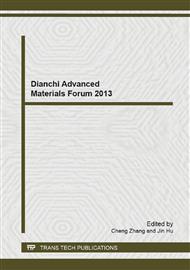[1]
M. Onoiuka, S. Tsujimura, M. Toyoda, et al.; Electrical Insulation and Conduction Coating For Fusion Experimental Devices, Fusion Technology, Vol. 29, Japan, 1996, 73-82.
DOI: 10.13182/fst96-a30657
Google Scholar
[2]
M. Lipa and E. Gauthier; Characteristics of Boron Carbide Coating for Actively Cooled Plasma Facing Components, Fusion Technology, 1994, edited by K. Herschbach, W. Maurer, J. E. Vetter; 1995 Elsevier Science B.V., 455-458.
DOI: 10.1016/b978-0-444-82220-8.50082-0
Google Scholar
[3]
V. Philipps, A. Pospieszczyk, U. Samm, et al.; Behavior of Carbon and Boron Ccarbon Materials at High Temperature in TEXTOR, Journal of Nuclear Materials; 1992, 196-198: 1106-1111.
DOI: 10.1016/s0022-3115(06)80204-7
Google Scholar
[4]
E. Vietzke, V. Philipps, K. Flaskamp; High Temperature Erosion of Boron/Carbon Materials; Journal of Nuclear Materials; 1992, 196-198: 1112-1117.
DOI: 10.1016/s0022-3115(06)80205-9
Google Scholar
[5]
H. Bolt, M. Araki; Heat Flux Experiment on First Wall Mock Coated by Plasma Sprayed B4C.
Google Scholar
[6]
G. Vieider et al., Plasma facing components in ITER, IAEA-CN531 F-3-12, IAEA Conf. On plasma physics and controlled nuclear fusion research, Washington DC (1-6 October 1990).
DOI: 10.1088/0029-5515/31/4/013
Google Scholar
[7]
ITER plasma facing components, ITER Doc. Series No. 30, IAEA Vienna, (1991).
Google Scholar
[8]
W. Eckstein, Plasma-materials data for fusion, J. Nucl. Fusion, 1991, Vol. 1: 17-30.
Google Scholar
[9]
Y.K. Zhu, et al., Plasma-surface interaction studies in HL-1 Tokamak, Journal of nuclear materials, 162-164(1988): 448.
Google Scholar
[10]
K.A. Niemer et al., Modeling of runaway electron damage for the design of Tokamak Plasma Facing Components, SANDIA Report, SAND-88-2045(1989).
DOI: 10.1109/plasma.1989.166023
Google Scholar
[11]
Y. Yamauchi et al., J. Nucl. Mater., 241-243(1997): 1421.
Google Scholar


